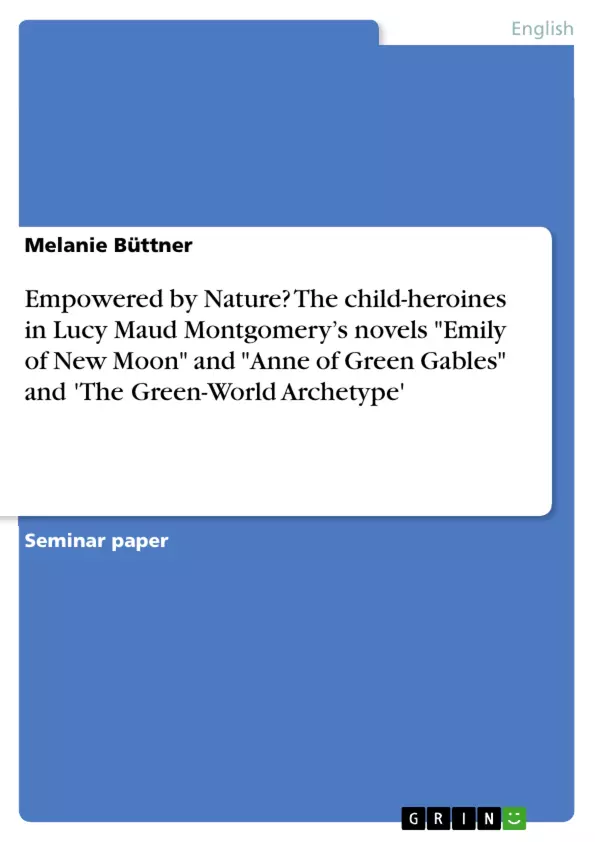In her book The Second Sex (Beauvoir 1953: 362) the world-famous French philosopher and feminist Simone de Beauvoir writes that
“[t]he adolescent girl will devote a special love to Nature: still more than the adolescent boy, she worships it. Unconquered, inhuman Nature subsumes most clearly the totality of what exists. The adolescent girl has not yet acquired for her use any portion of the universal: hence it is her kingdom as a whole; when she takes possession of it, she also proudly takes possession of herself.”
The idea of nature as a safe haven and retreat where a young girl refuges to and repeatedly finds solace and empowerment also penetrates children’s literature. What Annis Pratt calls The Green-World Archetype (Pratt 1981: 16-24), “an adolescent girl who lives close to nature, is one of the most common female protagonists in children’s fiction”. (Nikolajewa 2002: 332)
Nature features prominently in the novels of the 20th century Canadian authoress Lucy Maud Montgomery best known for her classic girl’s book Anne of Green Gables. In all of her books Montgomery’s protagonists are female heroes. The heroines of her novels and short stories vary from each other in age. Out of her twenty-one books eleven focus on female protagonists in late childhood or early adolescence of about nine to approximately eleven years of age. (Epperly 1992: 7)
A prominent theme that runs through all of those novels is the development of self-confidence of the, at the outset of the story, powerless young heroine. Throughout the storylines each one of the young girls “learns to value herself in relation to the surrounding community and culture” (Epperly 1992: 7) - and nature, more precisely the fictionally adapted landscape of L.M. Montgomery’s beloved Prince Edward Island, seems to play a vital part in that process.
In her monograph The Fragrance of Sweetgrass Epperly states that in the first book of the Anne of Green Gables series “three quarters of the novel’s nature descriptions are offered as though through Anne’s eyes”. (Epperly 1992: 18) What is true for Anne of Green Gables can also be observed in Montgomery’s other children’s fictions. Throughout her books the Canadian authoress enables the reader to perceive nature through the eyes of her adolescent or child heroines; thus enabling us to detect what kind of effects the natural surroundings might have on the female protagonist’s psyche and psychological development while she is growing up.
- Quote paper
- Melanie Büttner (Author), 2010, Empowered by Nature? The child-heroines in Lucy Maud Montgomery’s novels "Emily of New Moon" and "Anne of Green Gables" and 'The Green-World Archetype', Munich, GRIN Verlag, https://www.grin.com/document/162828



